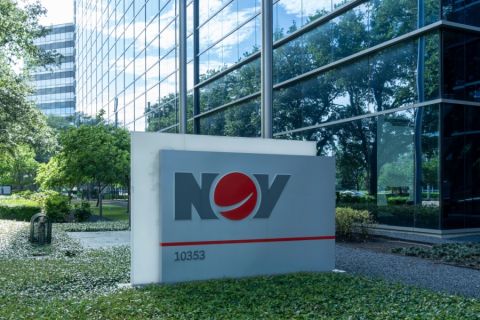Dennis Kissler is senior vice president of trading for BOK Financial Securities. He is based in Oklahoma City.

In case you missed the news, Berkshire Hathaway, one-third owned by multi-billionaire Warren Buffett, has agreed to purchase an additional 50% stake in the Cove Point LNG facility—a move with a $3.3 billion cash price tag. While that’s chump change for the “Oracle of Omaha,” the move is being interpreted by some as a bet on energy infrastructure—and it’s certainly raising public awareness of LNG.
Although Berkshire Hathaway’s recent purchase has turned some heads, it’s not the company’s first foray into LNG—or Cove Point, for that matter. Berkshire Hathaway Energy, which is a unit of Berkshire Hathaway, already operates the Chesapeake Bay, Md.-based facility. The recent purchase puts its total ownership at 75% upon closing, while a unit of Brookfield Infrastructure Partners owns the remaining 25%.
Nevertheless, while Buffett’s latest move is not his entrance into the LNG space, it can be read as signaling his commitment to it. After all, Cove Point is one of the few functional facilities in the country that can export LNG. This commitment is something both LNG producers and natural gas investors should feel very positive about. Berkshire Hathaway’s purchase has generated broader attention to not only LNG but also the energy needs that will need to be met in the future as the global economy moves toward cleaner burning fuel.
What this means for LNG and gas producers
In the long term, LNG likely is going to be the price savior for gas producers. I think we’ll see more LNG terminals, as well as expansions, constructed. Cumulative movement of LNG is expected to increase approximately 57% from second-quarter 2023 to second-quarter 2026. That figure could actually be higher, depending on government legislation. I also believe LNG’s growth will alleviate a lot of the excess natural gas supplies that we are currently seeing in storage facilities, as well as some of the gas production today that is landlocked. It’s important to remember that gas pipeline infrastructure is still lacking in the Northeast. Hopefully, that will change somewhat. While the Mountain Valley Pipeline is an on-again/off-again project, I do believe it will be having some flow by 2025.
Looking globally, Asia’s consumption of LNG had been down in recent months, partly due to China’s weaker-than-expected economic rebound. That has been good news for Europe, as the region has been using LNG to replace pipelined Russian gas. However, China is currently constructing multiple mega-power plants. These plants will be powered by natural gas that will be supplied mostly by LNG, so Asian demand likely will expand substantially over the next couple of years.
Meanwhile, the Russian-Ukrainian conflict likely will persist and become more volatile once we move into late fall and early winter. That, of course, will continue to impact the energy market, but no matter the outcome of the conflict itself, Europe’s appetite for U.S-supplied LNG isn’t going away anytime soon and possibly will increase. That said, a colder than normal winter in the U.S or Europe, or both, could change gas prices very quickly.
On that note, gas prices have been below expectations due to a mild May and June weather pattern in the U.S. While July has been very hot in southern and western states, the average of overall U.S cooling demand days has actually come in below the last three years’ averages to date, hence the excess storage. European gas storage has also refilled at a much quicker rate than most analysts expected, due to both the weather and continued gas flows from Russia. Consequently, looking forward, a possible winter squeeze on prices like we witnessed back in 2022 is becoming less probable.
And so, while Buffett’s latest move is positive in the sense that more people know what LNG is, the bigger story is what LNG can do for the energy market in the short- and long term. We might now get an answer to the two natural gas market woes—excess supplies and landlocked production—and a stride forward to meeting the cleaner-burning energy needs of the future. While forward prices will still be hard to predict, it seems LNG should place a more solid floor under natural gas producers.
Recommended Reading
NOV Announces $1B Repurchase Program, Ups Dividend
2024-04-26 - NOV expects to increase its quarterly cash dividend on its common stock by 50% to $0.075 per share from $0.05 per share.
Repsol to Drop Marcellus Rig in June
2024-04-26 - Spain’s Repsol plans to drop its Marcellus Shale rig in June and reduce capex in the play due to the current U.S. gas price environment, CEO Josu Jon Imaz told analysts during a quarterly webcast.
US Drillers Cut Most Oil Rigs in a Week Since November
2024-04-26 - The number of oil rigs fell by five to 506 this week, while gas rigs fell by one to 105, their lowest since December 2021.
CNX, Appalachia Peers Defer Completions as NatGas Prices Languish
2024-04-25 - Henry Hub blues: CNX Resources and other Appalachia producers are slashing production and deferring well completions as natural gas spot prices hover near record lows.
Chevron’s Tengiz Oil Field Operations Start Up in Kazakhstan
2024-04-25 - The final phase of Chevron’s project will produce about 260,000 bbl/d.




